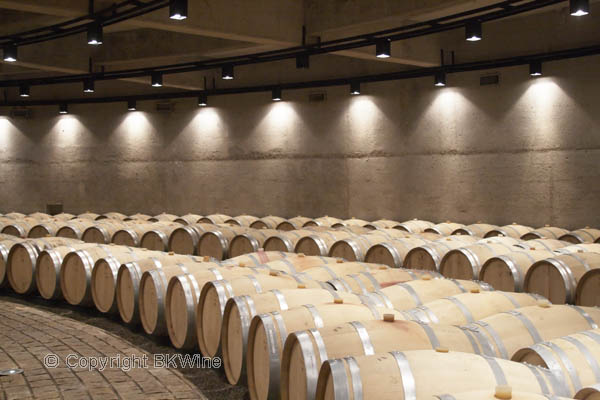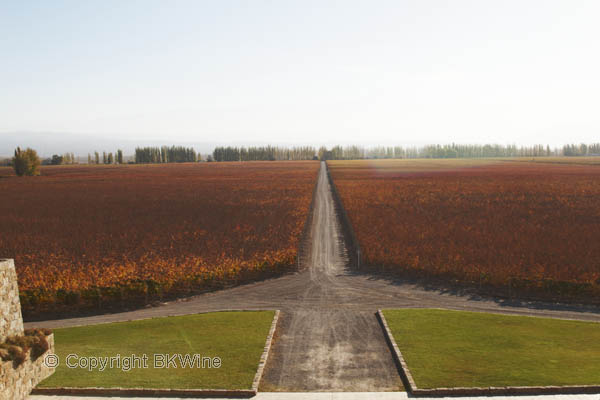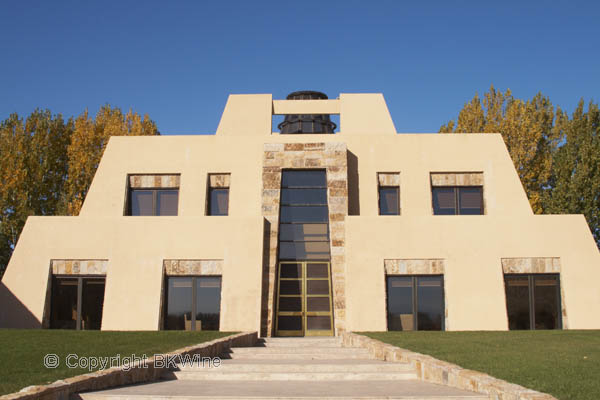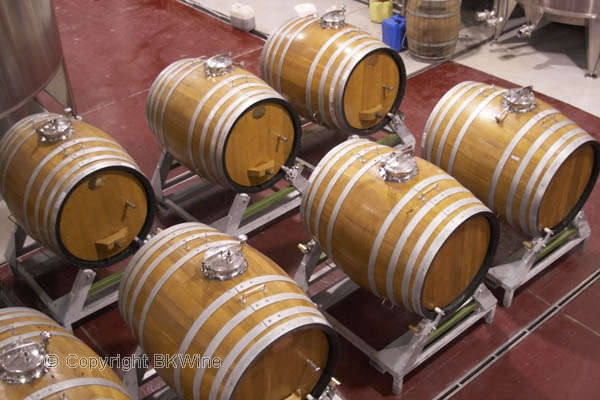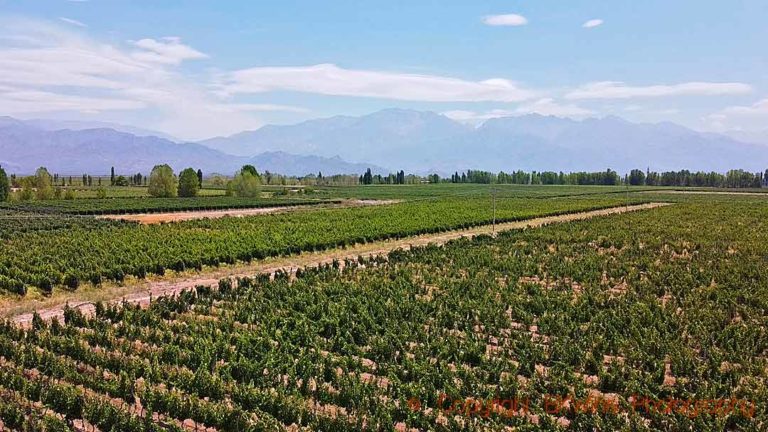The altitude where a vineyard is has a great impact on the result, on the wine. At higher altitude the temperature is cooler. A rule of thumb is that 100 metres makes a difference of 1 degree Centigrade. The winery Bodega Catena Zapata in Mendoza in Argentina has vineyards at several different locations, up to around 1500 metres. BKWine’s Peter Cronström met two of Catena Zapata’s winemakers over a wine tasting that was a very good illustration of the altitude effect.
Ernesto Bajda and Mariela Molinari are winemakers at the wine producer Bodega Catena Zapata, perhaps the leading wine producer in Argentina. Over its 100 years of existing it has evolved into a provider of a wide range of wines. Since the 1980s they have created a range of quality wines by introducing greater control and accuracy throughout the entire process from growing to bottling.
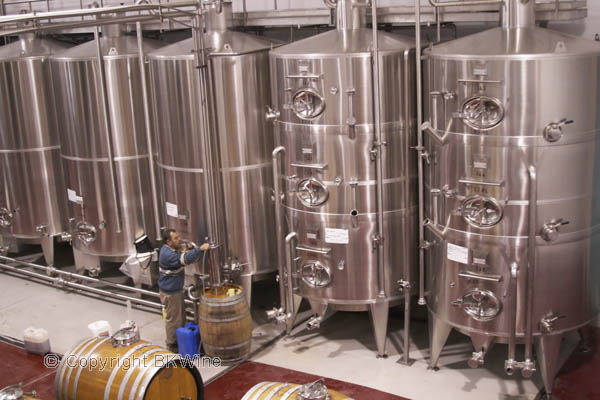
Malbec is of course one of the main grapes for Catena. Their vineyards are located in a variety of different places and they are experimenting with growing malbec at various altitudes. The wine region of Mendoza, where Catena’s vineyards are located, has a very dry climate. All plantations are irrigated with melt-water from the Andes.
Ernesto talks about the wines, and so in a very inspiring way. The tasting began with five malbec wines. The five wines came from vineyards located at different altitudes. The five were from
- Angélica, Lunlunta, Maipú, 850 m altitude
- La Pirámide, Agrelo, Luján de Cuyo, 940 m altitude
- Nicasia, Altamira, San Carlos, 1180 m altitude
- Adrianna, Gualtallary, Tupungato, 1480 m altitude
This is only four locations since two of the wines were from the same vineyard, Adrianna, but from different growing conditions in the vineyard, one from a north slope and the other from a south-facing slope. All wines were from the same year, 2011. The wines will be blended into the cuvee that will be available commercially at Systembolaget (Swedish monopoly retailer) in the autumn (see below).
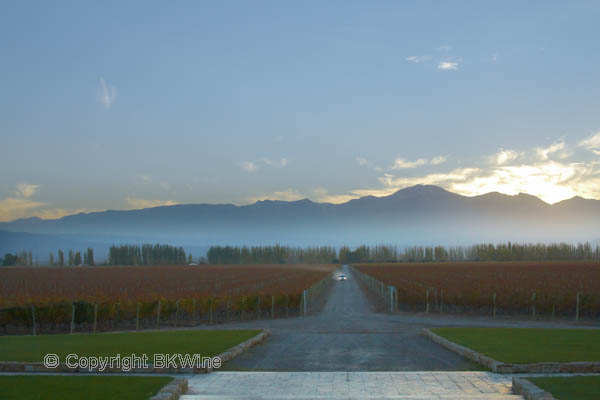
All were typical malbec wines with very dark colour and the flavours of plums, dark berries and spices, with a certain sweet fruitiness in the finish. The difference between the locations is that higher altitude gives greater complexity and more acidity. The difference between the two wines from the same vineyard was actually also relatively big, the one from the southern slope had significantly more sweetish fruit with dark berries. The one from the north slope had more acidity.
The malbec from Catena that will be launched this autumn at Systembolaget is Catena Alta Malbec 2011. This vintage is a blend of wines from vineyards at Nicasia and Adrianna. I tasted that too. It was a wine with very good balance between fruit, acidity and tannins. It will retail at a very affordable price when it is launched.
Along with a straight-forward but very tasty salmon dish we tasted two different chardonnay wines. One was Catena Chardonnay 2013. It is a new vintage where 70% of the wine has undergone malolactic fermentation and aged in oak barrels. The wine has aromas and taste with a lot of minerals and gooseberries which went well with the salmon. The second chardonnay wine was White Bones Chardonnay 2011. It has grown on land which is an ancient seabed. The soil consists of limestone with fossils, hence the name. The wine had more acidity and freshness and a hint of mint to taste.
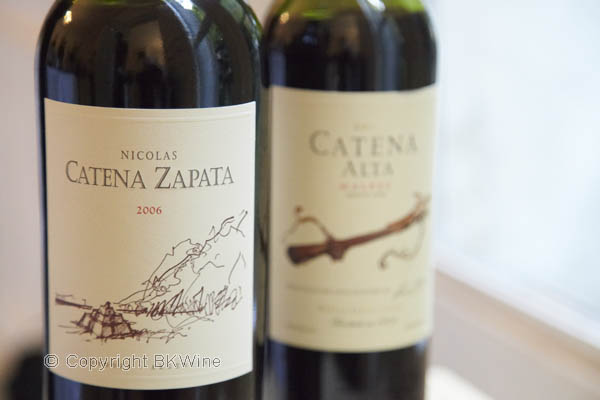
After this interlude with white wines, it was time to taste more malbec together with a delicious piece of meat, a good pairing. The wines we tasted, and that will be launched later this year, were Nicasa Malbec 2010 and Argentino Malbec 2010, both very promising and typical quality malbec wines that will arrive just in time for Christmas, as Christmas gift wines.
As a conclusion, I tasted two different vintages of Catena’s prestige wine, which they only make in good years and from selected grapes, Nicolas Catena Zapata 2010 and 2004. These are wines that have won numerous blind tastings against both French and American wines and that are definitely high quality wines. They are made from mostly cabernet sauvignon with an addition of some malbec. Both wines are typical cabernet wines with dark berries, especially blackcurrant, and minerals. The 2004 was well on its way to become a wonderful soft wine but still with a lot of tannins. It can be aged for many more years to come. The 2010 needs to be aged, but you can already feel the complexity that will just continue to develop.
Peter Cronström writes on BKWine Magazine on wine tastings with wine merchants and importers.
[box type=”info” style=”rounded” border=”full”]If this makes you curious to discover more about Argentinean wines, high altitude wines, and wine and food in Mendoza, then you should come on a wine tour to Argentina and Chile with BKWine. The next wine tour to South America is scheduled for February. A unique wine experience. Click the link for details!
Travel to the world’s wine regions with the experts on wine
and the specialist on wine tours and wine travel.[/box]
